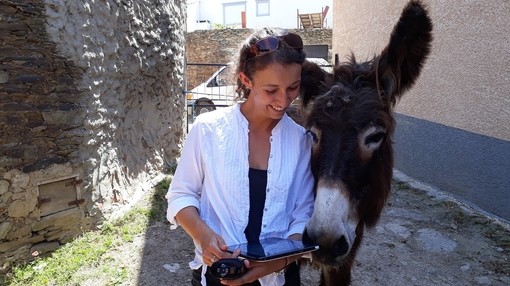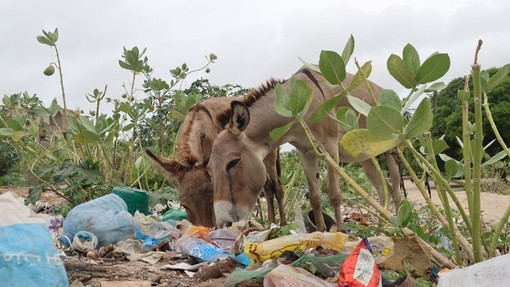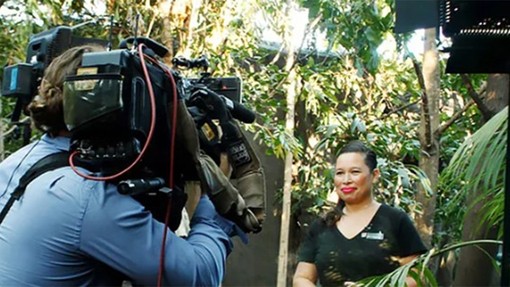
In discussion with Emily Haddy
Dr Emily Haddy is a Equid Welfare Researcher whose Postdoctoral research focused on working equid welfare, which included donkey behaviour and human psychology. Now, she explains, she “deals with the ‘big picture’” - all the environmental and human influences on working horses, mules and donkeys - and recently has been using theatre to positively impact donkey welfare.
What is it that excites you the most about your work?
I’ve always been passionate about animal welfare. My undergraduate degree was in Conservation Biology, so I started in the environmental sphere. But I had been heavily involved in wildlife rehabilitation from when I was quite young, growing up in Cornwall. It was a natural sidestep to go into animal welfare. I haven’t looked back since!
Is animal welfare as broad a topic as it sounds?
This is where interdisciplinary working comes in - so many things impact welfare. Previously people tended to work in silos and there was a focus on the biological metrics, which obviously are important. But if you’re trying to solve a problem more broadly, there’s a lot of other factors that feed into it - people’s social environment, the resources available and their physical environment. My research has a more holistic view. My PhD examined environmental and human influences, then this year I am looking more at dissemination of welfare information and its effectiveness.
With so many different factors influencing welfare, how did you decide to focus on social impact?
There was an advert for a PhD on donkey welfare, specifically looking at working donkeys internationally. They’re so important to so many people, but very overlooked - an underdog. And in academic and political circles they’re pretty much invisible. It appealed to me to have the ability to produce research that supported them, gave them a voice and gave us more information on strategies that might help them.
The nice thing with research is that you’re not necessarily funnelled down one path. This year, we’ve been looking at the impact of community theatre on welfare, but also looking at plastics. And there are influences in terms of community resilience and climate change as well. So there’s scope for going down avenues that interest you in your subject area, which is quite nice. Because it’s interdisciplinary, I get to reach into disciplines that I don’t necessarily have so much experience in myself. I’m biology and animal behaviour based, but we have colleagues who input on collaborative projects, so you get to learn a lot about other areas.

Can you tell us how arts and theatre come into animal welfare research?
We’ve recently trialled the use of forum theatre as an information dissemination mechanism to connect with donkey-owning communities. The communities can be quite geographically isolated, have limited resources and sometimes variable levels of access to education, which means literacy can be variable too. So we’ve been trying to find ways that engage people, but not in your traditional lecture format. Some of our previous work on owner attitudes highlighted the need to engage with people about animal sentience and the general welfare problems that exist, and theatre is a great avenue for doing this.
I hadn’t made a foray into arts before, but it was really interesting. We had some colleagues with a lot more experience and we worked with a local theatre group, Lamu Arts and Theatre Alliance, on the island. Working with an organisation within the community was important, because they know the local context and could help us steer the production towards what the community would be interested in.
We also ran focus groups with donkey owners because we wanted to understand their perspectives. This covered the welfare issues that they feel their animals have, but also the community, their needs, socioeconomic challenges and how donkeys are perceived. Some interesting topics came out of these groups that formed the basis for the theatre piece. This meant we could ensure it was representing people’s views and was really specific to the welfare problems that are endemic on the island.
How does forum theatre work?
Conventionally you have a play and it runs from the start to the end, and that’s it. Whereas with forum theatre, it centres around characters who make a series of choices throughout the play and the first time through it ends quite badly for them due to the choices that they’ve made.
But then the play gets run through a second time. This time the audience gets to step in. Whenever a character makes a choice, they can then suggest an alternative - what they think the person should do. It gets people involved in the production, and thinking about the content and the issues that are brought up. Obviously, our play was donkey welfare themed. And by the end of the second run-through, with the different choices that are made by the audience, the ending is usually a lot happier for the characters in the play.
We’ve also taken it on a school tour with child-friendly content, focused on a donkey and how he feels in different situations.
The biggest single audience for a show was probably at the Lamu Culture Festival on the seafront. There were at least 400 people and more were trying to cram in and see!

What was Lamu like when you visited?
It’s an amazing place and a UNESCO World Heritage Site of Swahili culture. The vets that run The Donkey Sanctuary clinic there on the seafront is just so lovely. The first time I visited, I was mainly standing on the rubbish dump watching donkeys for long periods of time (for plastics research), so perhaps less glamorous than you might think. The second time around was for the theatre project and the Lamu Culture Festival, which has lots of donkey-themed activities, but also other culturally significant things like traditional dhow sailing.
I’m curious about how The Donkey Sanctuary came into your life. How is it all connected?
I’ve been pretty fortunate to work with them for quite a while. They sponsored my PhD by providing the funding for fieldwork. I collected data in Spain, Portugal and Mexico in collaboration with The Donkey Sanctuary team. It’s a mutually beneficial relationship, because I can use research to help with questions about programming or impact. I get to indulge my love of donkeys and, motivation wise, I like to think that my work has real world impact. Having The Donkey Sanctuary as a partner for my PhD ensured that the work that I was doing had some interest to people who are actually going to use it.
And what would you say that the biggest welfare concerns are?
In most populations of working equids, you get similar welfare issues; low body condition score or lameness for example. Because donkeys are specifically used for carrying goods by pack, you also get issues with poorly fitting working equipment, overloading or uneven loading which can create a lot of friction, which then causes wounds. Plastic pollution is an issue in terms of ingestion of plastics and that can often be fatal.
What question would you ask yourself that I haven’t asked you?
What have I enjoyed most about the work that I’ve done? I would definitely say being in the field, working with communities and the hands-on work with the donkeys, horses or mules.
Share this page
Tags
- Blog


